
EmployEE Training and profEssional dEvElopmEnT 2023 - Eimile Tansey, Chief People Officer, ATI Physical Therapy JANUARY 2023 • Vol.10 • No.01 (ISSN 2564-2014) 21 14 30 34 safeguarding your Workforce during a downturn - Janice Burns, Degreed long-Term learning delivers long-Term Benefits - Stephen Rapier, Pepperdine Graziadio Employee success and Customer success go Hand-in-Hand - Krystal Lamoureux, Pearson mistakes To avoid When launching a gBl Training strategy - Christopher Pappas, The eLearning Industry’s Network


Employee Learning & Development Excellence JANUARY 2023 Vol.10 No.01 Employee Training and professional development 2023 Listening to the needs of those on the inside - Eimile Tansey, Chief People Officer, ATI Physical Therapy 07 On the Cover ind EX (ISSN 2564-2014) Content 26 Do You Have The “Currency Of The Future Workplace?” Skills that employees need to future-proof their careers - Jason Richmond, Founder, Ideal Outcomes 32 Five Tips To Build Better Leaders In Your Organization Transforming your work environment for the better - Chandrashekar LSP, Senior Evangelist, Zoho Corp 37 How Caring Leaders Nurture And Grow Collaboration Collaboration is much more than people working together - Bob DeKoch, President, Limitless and Phil Clampitt, Professor, University of Wisconsin-Green Bay 11 Leadership Development From A Place Of Abundance And Possibility Learn how to lead with abundance - Dr. Jonathan H. Westover, Chair and Associate Professor, Organizational Leadership, Woodbury School of Business (UVU) 17 Organizational Change And Employee Training And Development Trends To Watch In 2023 People leaders’ priorities for 2023 - Association of Equipment Manufacturers
Digital transformations begin with skills

- Janice Burns, Chief People Officer, Degreed
Employee
5 key ingredients of a long-term, impactful training program
- Stephen Rapier, Assistant Professor, Marketing, Pepperdine Graziadio Business School
3
- Krystal Lamoureux, Vice President, Customer Success, Pearson
Learn how to fit GBL into your employee training strategy


- Christopher Pappas, Founder, The eLearning Industry’s Network

Top Picks 14
21 30 34
Safeguarding Your Workforce During A Downturn
Delivers
Long-Term Learning
Long-Term Benefits
Success And Customer Success
Go Hand In Hand
strategies to enable employee success
Launching
Mistakes To Avoid When
A GBL Training Strategy
INDEX
Editorial Purpose
Employee Training and professional development 2023

Apandemic, mass resignation, and people’s changing priorities have transformed the world of work forever. Now, with layoffs, an impending recession, and an ever so competitive market, 2023 is going to be one of the toughest years for organizations.
Today, people no longer want to be associated with a company that does not prioritize their professional development. Any company that has no plans for career development and skills enablement of employees will see a major setback. People seek a place where they are valued and given an opportunity to grow and develop.
Do you care about your employees’ growth and development? This is a crucial question, the answer to which will define every company in 2023.
So, what can human resources professionals do to make their company a place that employees want to stay and grow with? Check out ATI Physical Therapy Chief People Officer Eimile Tansey’s Employee Training And Professional Development 2023 to understand how you can build a culture that values employees and their overall growth.
As market conditions change, your workforce may need to make quick decisions. The uncertainty of a downturn requires experimentation and flexibility, and you can only achieve that if your workforce has up-to-date knowledge and skills.
In Safeguarding Your Workforce During A Downturn, Degreed Chief People Officer Janice Burns tell us what makes a company thrive in a downturn.
Also, read Mistakes To Avoid When Launching A GBL Training Strategy by Christopher Pappas, Founder of The eLearning Industry’s Network.
That is not all! We bring you a handful of other insightful articles in this edition of Employee Learning & Development Excellence, and hope you find answers to your queries about employee learning and development that help you achieve excellence in our L&D initiatives.
Will 2023 be any different from 2022, only time will tell. Till then, Happy Reading. And, a Happy New Year.
Disclaimer: The views, information, or opinions expressed in the Excellence ePublications are solely those of the authors and do not necessarily represent those of HR.com and its employees. Under no circumstances shall HR.com or its partners or affiliates be responsible or liable for any indirect or incidental damages arising out of these opinions and content.

EdiTor’s noTE
OR For Advertising Opportunities, email: sales@hr.com Copyright © 2023 HR.com. No part of this publication may be reproduced or transmitted in any form without written permission from the publisher. Quotations must be credited.
Our mission is to promote personal and professional development based on constructive values, sound ethics, and timeless principles.
McGrath CEO, HR.com
Publisher
Jeffers VP, Sales Sue Kelley Director (Product, Marketing, and Research) Babitha Balakrishnan and Deepa Damodaran Excellence Publications Managers and Editors Employee Learning & Development Excellence Team Deepa Damodaran Editor
Design and Layout (Digital Magazine) Chandra
Submissions
Correspondence Please send any correspondence, articles, letters to the editor, and requests to reprint, republish, or excerpt articles to ePubEditors@hr.com For customer service, or information on products and services, call 1-877-472-6648 Employee Learning & Development Excellence (ISSN 2564-2014) is published monthly by HR.com Limited, 56 Malone Road, Jacksons Point, Ontario L0E 1L0 Internet Address: www.hr.com
Excellence Publications Debbie
-
Dawn
Chinnavel
Shekar Magazine (Online Version)
&
deepa damodaran Editor, Employee Learning & Development Excellence
Subscribe now for $99 / year And get this magazine delivered to your inbox every month Become a Member Today to get it FREE! SIGN UP Write to the Editor at
debbie mcgrath Publisher, HR.com
ePubEditors@hr.com
Training
How are our Employee learning & development
Training & Development Excellence - Monthly Interactive Learning Journal
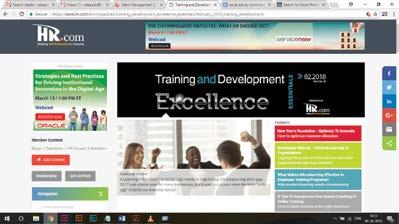
Employee learning & development Excellence - monthly interactive learning Journal
This monthly interactive learning experience showcases effective, learner-centered technologies and content to facilitate the formal and informal transfer of the latest e-learning knowledge, information and skills in today’s workplace.
Training and Development Virtual Events
Employee learning & development - virtual Events

Virtual events in the Employee Learning and Development track help you stay on top of the latest training, development and assessment techniques in order to maintain a competitive edge in the marketplace. Develop your skills, concepts, and attitude changes, and gain more knowledge to enhance performance. Training is crucial for organizational development and its success which is fruitful to both employers and employees of any organization. Some important benefits of training and development include: Increased productivity, Less supervision, Job satisfaction and Skills development. Each Virtual Event consists of up to 10 credit webcasts.
Virtual events in the Training and Development track help you stay on top of the latest training, development and assessment techniques in order to maintain a competitive edge in the marketplace. Develop your skills, concepts, and attitude changes, and gain more knowledge to enhance performance. Training is crucial for organizational development and its success which is fruitful to both employers and employees of any organization. Some important benefits of training and development include: Increased productivity, Less supervision, Job satisfaction and Skills development. Each Virtual Event consists of up to 10 credit webcasts.
Training and Development Webcasts for Credit
Employee learning & development - Webcasts for Credit
HR.com webcasts deliver the latest Training and Development industry news, research trends, best practices and case studies directly to your desktop. Webcasts are available live online with a downloadable podcast and a copy of the slides (PDF) available before and after each webcast. Earn all of the required recertification credits for aPHR, PHR, SPHR, GPHR, and SHRM Certifications. HR.com’s one-hour webcasts, in every HR specialty including HRIS and Payroll, are pre-approved for HRCI and SHRM credit (excluding Demo webcasts).
Training and Development Community
Employee learning & development - Community
Join almost 13,000 HR.com members with a similar interest and focus on Training and Development. Share content and download research reports, blogs, and articles, network, view educational webcasts, and “follow” peers and have them “follow” you in a social network platform to communicate regularly and stay on top of the latest updates. This well established Training and Development Community is an invaluable resource for any HR professional or manager.
www.hr.com
SEP 2017 Vol. 5 No. 09
these invaluable
& Development resources today!
How are our
& Development Products and Services helping to make you smarter?
Use
Training
For more information phone: 1.877.472.6648 | email: sales@hr.com |
Employee Learning & Development
In a world of unparalleled challenges (global pandemic, racial injustice, political rivalry, digital 4.0, emotional malaise), uncertainty reigns. Finding opportunity in this context requires harnessing uncertainty and harnessing starts with reliable, valid, timely, and useful information. The Excellence publications are a superb source of such information. The authors provide insights with impact that will guide thought and action.
dave Ulrich
Rensis Likert Professor, Ross School of Business, University of Michigan Partner, The RBL Group

Excellence publications are my ‘go-to’ resource for contemporary and actionable information to improve leadership, engagement, results, and retention.
Each edition offers rich and diverse perspectives for improving the employee experience and the workplace in general.

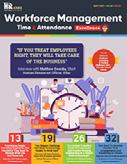
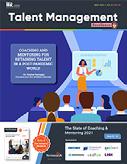

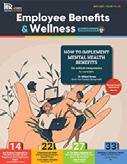


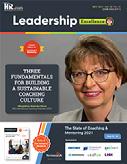

Julie Winkle giulioni
Author, Virtual /Live Keynote Presenter, Inc.’s Top 100 Leadership Speakers

I regularly read and contribute to Leadership Excellence and Talent Management Excellence. I use many of the articles I read to augment my own presentations and I often share the articles with my clients. They are always quick, right on target for the latest issues in my field, and appreciated by my clients.
If you want to stay up to date on the latest HR trends, choose a few of the different issues from the Excellence series of publications.


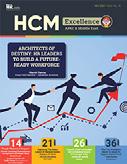

dr. Beverly Kaye
CEO, BevKaye&Co.

We’re eager to hear your feedback on our magazines. Let us know your thoughts at ePubEditors@hr.com WHY EXCELLENCE PUBLICATIONS?
Employee Training and professional development 2023
listening to the needs of those on the inside
By Eimile Tansey, ATI Physical Therapy
In 2021, U.S. workers left their jobs in record numbers in what is now known as the “Great Resignation.” A top reason employees chose to resign was that they believed there were no opportunities for advancement in their position or at their organizations.
When an organization experiences a lack of employee retention in the workplace, it begs the question: what can we as human resources professionals do to make our company a place that employees want to stay and

grow with? The answer rests in building a culture of learning and professional development so employees know the organization offers a pathway to growth — while also keeping personal goals in mind.
There are many reasons for an organization to provide educational opportunities for its employees, not the least of which is it conveys that their employer genuinely cares about their growth and development.
Employee Learning & Development Excellence presented by HR.com January 2023 7 Submit Your Articles
CovEr arTiClE
It is no coincidence that employee retention has a direct correlation with employee training and career development — retention rates rise 30-50% when an organization creates a strong culture of learning and its people know that their employer cares about their personal career goals. Another intangible benefit shows up over time in recruiting, when a company is able to establish itself as an employer of choice. This in turn helps support company growth by ensuring your people are happy, healthy and productive, but they also work on your behalf to help attract and retain other talented people.
The key to employee retention and recruitment benefits is to establish a highly effective learning program that caters to both outstanding individuals and the larger pool of employees. Successful training and learning methods depend in part on the person, their aspirations and their role in the organization.

To start, effective leaders in management positions need to understand how their people feel about growth and development through conversations and surveys. Then, an individual development plan should
be customized both to the employee and ideally to the needs of the business. If done correctly and collaboratively, we as HR professionals can help our people continually improve in their day-to-day roles while working toward where they would like to advance in the company.
These individual plans also build effective succession plans for the organization to ensure that there is development of future leaders, which is important to the longevity of any company.
In my position at ATI Physical Therapy, I oversee our learning and development program, which utilizes internal and external training assets for the growth of our employees at nationwide clinics and within our corporate team. To help with individual growth, we have created clinical and leadership pathway programs to aid a new employee’s transition into the organization or a veteran employee into a promotion.
Additionally, we maintain on-demand best practice learning tracks for self-study in the domains of clinical, leadership and professional development.
Employee Learning & Development Excellence presented by HR.com January 2023 8 Submit Your Articles Employee Training And Professional Development 2023
We also offer a learning management system for knowledge development and the acquisition of continuing education units (CEU) for physical therapists in our clinics.
Clinicians have access to an external CEU course stipend to attend courses outside of what we offer. These outside learning options are necessary for retaining and helping employees grow their careers.
These are just a few examples of how human resources can support employees, who are starting or growing at a company, while also offering ongoing internal/external training to continue to develop key skills, including those that support inclusion, diversity and equity.
To help ensure training and professional development programs continue to meet the needs of employees, it is important for human resources to listen to team members on an ongoing basis and introduce new programs to meet their needs. For example, at ATI we evaluate our program several times per year with employee surveys and we have seen increased scores in this area.
This includes feedback from new hires, many of whom say they choose to work at our company because of our development program. We also have created a series of nationwide listening tours to hear firsthand from our people what is most important to them, and this feedback will be further incorporated into our programs going forward.
When an organization starts to get feedback like this, it demonstrates one of the biggest returns on investment for any company: knowing that their employees have the tools, training and processes to make them successful at delivering on the company’s mission.
Any organization can use these guidelines to have a more streamlined and effective learning program:
● Start with your people to understand what is important to them and their career development, then design or tailor your education and training programs accordingly.
● Make training accessible — from a time standpoint, technologically and in alignment with the employee’s current role. A great training program is beneficial only if your people are able to utilize it.
● Listen to your employees so you can pinpoint their exact needs.
You will know that your organization’s training program is a success when you hear directly from your employees that they are receiving the training and development opportunities they expect. Key performance indicator metrics that can affirm the effectiveness of a program and gauge its progress over time include retention, employee engagement, and internal employee referrals.
That being said, rely and act upon what your employees tell you they need, then deliver it. Over time, the increasing number of long-term employees and new hires will be the definitive indicators that your people are happy with your work and their own.
Eimile Tansey is the Chief People Officer at ATI Physical Therapy. Eimile comes with more than 20 years of experience in human resources and operations. Before coming to ATI, she served as chief people officer at elder-care provider InnovAge. Prior to that she held various HR leadership positions at CVS Health for more than a decade, rising to vice president of human resources.
Would you like to comment?

Employee Learning & Development Excellence presented by HR.com January 2023 9 Submit Your Articles Employee Training And Professional Development 2023
The Future of Coaching and Mentoring
FREE Virtual Event
April 5-6, 2023
Join us to learn how to maximize the potential of your people with the capabilities and skills they need to be happy and engaged employees.
This complimentary 2-day virtual event will include expert sessions covering a range of issues to help HR adapt their workforce coaching and mentoring initiatives to today’s changing environment.

Examples of session topics include:
� strategies and solutions to help HR improve employee coaching and mentoring
� what’s working and not working with employee coaching/mentoring
� the expertise of today’s leaders in these areas
� the hindrances to success
� the relationship of coaching and mentoring to organizational performance
� how to best leverage coaching and mentoring programs for the future of business
sales@hr.com | 877-472-6648 www.HR.com
In addition, this event will also explore the role of emerging technologies and how they will change the face of coaching and mentoring and new work processes over the next decade. Register for Free
leadership development from a place of abundance and possibility
learn how to lead with abundance
By Dr. Jonathan H. Westover, Woodbury School of Business (UVU)
Asa university professor, I am well acquainted with making do with limited resources. For a variety of reasons, in recent years, most institutions of higher education across the country have seen declining budgets. It seems that on a daily basis, various university divisions and academic programs across my university’s eight colleges and schools are jockeying for position in order to secure necessary resources.
This situation is certainly not unique to institutions of higher education. In fact, most organizations face similar pressures, as leaders have to wrestle with resource prioritization and allocation, often making difficult choices that benefit some in the organization while hurting others
What is interesting to me is how I see different individuals approach these challenges in vastly different

Employee Learning & Development Excellence presented by HR.com January 2023 11 Submit Your Articles
ways. For example, I consistently observe some leaders and colleagues approach budget constraints from a paradigm of scarcity. They tend to see it as a fixed pie, a zero-sum game. They view the world and their area from the perspective of what is lacking.
As a result, they often lead through fear and tend to chase the easy wins, while avoiding the more complex challenges and problems, rather than looking for ways to overcome them. When a leader has a scarcity mindset, if another area of campus or academic program gets resources, that means there is less for the leader and their area. This often leads to a hypercompetitive environment, political games and other unhealthy organizational behaviors and practices.
In contrast, occasionally I observe leaders or colleagues who seemingly reject the scarcity paradigm, replacing it with an abundance mindset. Despite the reality of limited resources that we all face, these individuals see challenges and obstacles as opportunities for learning and innovation. They adopt a growth mindset and constantly work to develop new skills, competencies and capabilities.
While there is only so far a fixed pie to go around, these individuals work to figuratively increase the size of the pie, so there will be more than enough for everyone. They find creative and innovative ways of
doing more with less and bootstrapping new projects and initiatives to generate new support and attract new students.
Which type of leader or colleague would you prefer to work with or for? For me, there is no question — I want to work with an abundance-minded team.

adopting an abundance mindset
In a recent Inc. article, the author writes: “Most successful leaders who have come from nothing have in common [an] abundance mindset. A clear mission and hard work can launch people to success, but an intentional abundance mindset creates the long-term and sustained success that leaders desire.” There is no substitute for hard work, resilience and grit, but unless we want to burn out, there is only so long we can beat our head against the wall of scarcity. We need to generate new opportunities.
Fostering an intentional abundance mindset helps us to recognize that opportunities for growth and continued success are all around us. While this may seem like a naïve, Pollyanna-esque approach that ignores the harsh realities of a complex, messy and competitive world, the opposite is actually true.
Those with a true abundance mindset are clear-eyed about the realities of the world around them. However,
Employee Learning & Development Excellence presented by HR.com January 2023 12 Submit Your Articles
Leadership Development From A Place Of Abundance And Possibility
unlike their scarcity-minded counterparts, abundance-minded individuals and leaders lean into the messiness, ambiguity and nuance of the challenges they face. They recognize the opportunity to learn and grow from their struggles, and they focus on expanding the pie and creating new opportunities, rather than worrying about the current limitations they face.
How to lead with abundance
While we may have the desire and intention of leading with an abundance mindset, human nature tends to suck us back into more of a fear-based scarcity paradigm if our thinking is left unchecked. Just like with any other skillset, competency or capability, an abundance mindset can be fostered and developed over time, as we give continual attention to shifting our paradigm.
Below are four tips to start you on an abundance path as a leader:
Get and stay really curious: We need to foster intellectual humility and continuously ask a lot of questions. We need to challenge our assumptions and the status quo. We need to continually strive for growth and development. If we think we have figured it all out, we will stunt our own growth and model an unhealthy dynamic for our people. On the other hand, modeling curiosity with your people will give everyone the permission to speak up and innovate — generating more opportunities.
Surround yourself with an abundance-minded team: We need to surround ourselves with a diverse and inclusive team of dynamic, abundance-minded individuals. If we empower each team member to bring their unique perspectives to the table, collectively we can enrich each other’s thinking and provide
the needed support when we are facing the daunting challenges that can push us towards scarcity thinking.
View growth and abundance as collaborative: Sustainable growth is inherently a collaborative endeavor; we cannot go it alone. We need to get out of our silos, create and maintain dynamic cross-functional and interdisciplinary teams, and foster a “rising tide lifts all ships” culture where no one is left behind. Leverage the diverse contributions of your people to fuel the next pie-expanding innovation.
Show genuine gratitude: Get in the habit of recognizing and acknowledging the many contributions of your team. Give generous thanks and never suppress a kind thought. An attitude of gratitude leads to an abundance perspective.
By asking a lot of questions, building a great team, leaning on that team and generously and relentlessly expressing gratitude for the good work everyone does, you will be able to shift the constraint-based culture of your organization to one focused on abundance. Using the framework outlined above, and shifting the focus from a fear-based, scarcity mindset, leaders can adopt a healthier approach to their work, one that sees abundance and creative solutions to tackling business problems.

Dr. Jonathan H. Westover is Chair and Associate Professor of Organizational Leadership at the Woodbury School of Business (UVU), Academic Director of the UVU Center for Social Impact and the UVU SIMLab, and Faculty Fellow for Ethics in Public Life (previously the Associate Director) in the Center for the Study of Ethics. He is also an experienced OD/HR/Leadership consultant (Human Capital Innovations, LLC), with experience transforming organizations across the globe.
Would you like to comment?

Employee Learning & Development Excellence presented by HR.com January 2023 13 Submit Your Articles
Development From A Place Of Abundance And Possibility
Leadership
safeguarding your Workforce during a downturn
digital transformations begin with skills
By Janice Burns, Degreed
Across the globe, business leaders are watching the current indicators of a downturn with laser focus. The impact of any economic uncertainty on organizations is well documented, with many leaders hunkering down and cutting back on anything they see as unnecessary spending.
However, research is proving that clever investments, particularly in your people, are needed more than ever to help organizations navigate uncertain markets and emerge stronger.
What makes a Company Thrive in a downturn?
During the recessions of 1980, 1990, and 2000, a small minority (9%) of companies actually flourished, outperforming competitors by at least 10% in sales and profit growth. They had two things in common, prior preparation that enabled their people to pivot quickly, and technology that made their business more transparent, flexible, and efficient. The common denominator needed for both is skills — namely, having the right people, with the right skills, in the right places.
skills power pivots
Pivoting quickly requires you to understand the current skills in your workforce, the skills needed to
pivot, and, therefore, any gaps that need to be filled to make the pivot. Employees might be moved from one role to another, or they may require reskilling if your business model, products and services change.
As market conditions change, your workforce may need to make quick decisions. The uncertainty of a downturn requires experimentation and flexibility, and you can only achieve that if your workforce has up-todate knowledge and skills.
digital Transformations Begin with skills
Likewise, a technology investment is only as effective as the people using it. They need the right skills to work with a new technology. Yet, almost 90% of CEOs state that they do not have enough digital skills in their workforce (hindering the technology from the start).
doubling down on Upskilling
This explains why leading organizations double down on upskilling their people during uncertain times. McKinsey & Company also found that these companies motivate their workers through more meaningful assignments and clarity over career advancement. These additions are key, as not only does it reinforce what is being learned by giving realworld opportunities linked to someone’s skills, but it
Employee Learning & Development Excellence presented by HR.com January 2023 14 Submit Your Articles
Top pick
also provides incentives for an employee to remain with their employer for longer.
increasing your Talent pool
Opening up opportunities for diverse candidates is also vital. With many sectors suffering from talent shortages, it makes sense to widen your talent pool as much as possible. Especially now, when many workers are quitting to enter other industries, gig work, or take early retirement. Consequently, some organizations are discarding requirements for education and are hiring people from more unconventional backgrounds as long as they have relevant skills and the ambition to learn.
Closing the skills gap
The current skills gap of 5.4 million in the U.S. would be 14% lower if the women, who lost their jobs during the Covid-19 pandemic, are able to re-enter the workforce. These candidates have skills and experience, they just need employers who are willing to take a chance on them and refresh their skills where needed.
That is why the likes of Verizon and Bell Canada have learning programs designed to be accessible to people from all backgrounds and life stages, no matter if you are commuting or on the school run.
autonomy to learn
These two organizations hold valuable lessons for others looking to safeguard and empower their people during uncertainty. Firstly, they recognize particular pain points of the people they are looking to upskill. For busy professionals, having easy-to-access, online, bite-sized learning makes it more likely that they will engage with consistency. Give people opportunities to learn in their own time, at their own pace, and to learn subjects that interest them.
alignment with the Business
Second, the subjects they offer are closely aligned with business needs. Bell Canada, for example, saw a need to reskill its people in AI, machine learning, business intelligence, cybersecurity, software development, and cloud computing. As a result, Bell Canada has moved 241 employees into new roles that align with its future needs, and 30% of these candidates are women (+8% over market availability). Likewise, Verizon created the Women of the World (WOW) career development program to amplify opportunities for women and minority groups. Participants in the program are 7.3 times less likely to quit, 1.7 times more likely to make lateral career moves, and 2.3 times more likely to get promoted. For a second, let us look at these figures from the employee’s point of view because it is a win-win for

Employee Learning & Development Excellence presented by HR.com January 2023 15 Submit Your Articles Safeguarding Your Workforce During A Downturn
them and their employers. For an individual, this investment has made their skills more aligned with the changing market, future-proofed their career, and opened opportunities to move to other departments or get a promotion.


Cost-effective learning
Providing your employees with upskilling opportunities does not have to break the bank. Online learning content, both public and paid-for, can be a cost-effective way to provide ongoing learning opportunities. This can be cemented by on-the-job learning, through stretch assignments, temporary redeployments, mentoring, and volunteering.
Again, these are relatively cost-effective to set up, and you may find skill gaps in other teams that can be filled in this way. Peer learning is another area worth exploring, where peers learn together and from each other, helped by a facilitator.
learning is the foundation of Everything
The temptation to cut back in areas that do not give immediate, clear returns is extremely high when the outlook is uncertain. However, if your learning efforts are clearly tied to business outcomes, the return on investment is clear.
Companies that choose to cut back on their learning and upskilling budgets could be hindering their long-
term growth potential and innovation efforts. Instead of pausing on upskilling your people, prioritize your development activities by focusing on the areas, where learning will have the most impact on business outcomes.
Some companies may upskill to make their marketing efforts more effective through social media platforms. While another may upskill their salesforce so that they can expand into a new market or penetrate deeper into their current client portfolios.
When learning and upskilling activities are tied to strategic business outcomes, it is easy to identify business metrics that will show the return on the investment. By taking this approach, linking skills to your business strategy and goals, your business executives will soon see how integral learning and upskilling are vital to the overall success of the business in all economic climates.
Janice Burns is the Chief People Officer at Degreed. As a human capital futurist and strategist, Janice develops and implements talent management and development programs that drive business results. She joined Degreed as their first Chief Career Experience Officer. Prior to Degreed, Janice spent 27 years at Mastercard, most recently as their Chief Learning Officer responsible for thought leadership on change management, business transformation, and the design and implementation of employee learning experiences and development programs globally.
Would you like to comment?
Employee Learning & Development Excellence presented by HR.com January 2023 16 Submit Your Articles
Your Workforce During A Downturn
Safeguarding
organizational Change and Employee Training and development Trends
To Watch in 2023
people leaders’ priorities for 2023
By Association of Equipment Manufacturers
With 2022 firmly in the rearview mirror and the new year now underway, it’s clear many of the opportunities and challenges impacting equipment manufacturers today are poised to remain as relevant as ever in the weeks and months ahead.
While it is a fool’s errand to try and predict exactly how 2023 will unfold for the industry, equipment manufacturers would be wise to pay close attention to a number of trends and how they may evolve in the near term. With that in mind, AEM caught up with several staff leaders to hear which ones, specifically, are top-of-mind for them at the moment.

1. The industry-wide Emphasis on oraganizational Culture
-- By Jaime Vos, AEM Senior Director of Revenue Development and Cultural Innovation
With so much change taking place in 2022, organizations in many industries, including equipment manufacturing, are being forced to respond
by reexamining their business models. Supply chain issues, increased competition, technology advancements and economic uncertainty have all placed pressure on companies to adapt, innovate and rethink how they do business.
In addition to these challenges, leadership will also need to address the morale of their workforce this year. What many have called the Great Resignation has affected organizations of all sizes and has made employee retention the single most important issue of 2023. After struggling through the COVID-19 pandemic, people are now reevaluating their role in the workplace. Many have placed a stronger value on their health and have chosen to accept other opportunities better aligned with their personal well-being.
Taking this into account, organizations will need to create a shared vision that supports the following areas for its employees:
● Employee values
● Work/life balance
● Creativity and collaboration
Employee Learning & Development Excellence presented by HR.com January 2023 17 Submit Your Articles
● Mental health awareness and support
● Hybrid telecommuting models
● Opportunities for career growth
Studies show that employees who feel recognized, respected and supported do more than what is expected If organizations want to strengthen employee retention, leaders will need to communicate openly with workers, listen to their concerns, address issues in real time and provide opportunities that empower a healthy culture.
Employees want to feel valued in their roles. Organizations that create a shared vision of well-being for their staff will see their culture empowered, inspired and committed to a prosperous new year.
2. The new normal of Employee Training and development
-- By Julie Davis, AEM Senior Director of Workforce and Industry Initiatives, SHRM-CP

Workforce issues remain so prevalent in equipment manufacturing today, that it’s simply not enough to foster a strong organizational culture in order to meet workforce demand.
Fewer people working coupled with more jobs, more diversity in available jobs and more competition across industries make workforce arguably the most pressing issue as 2023 gets underway. Because of these challenges, employee training and development should be a top priority for equipment manufacturers in 2023 and beyond. While employee training and development may be a budgetary afterthought for some equipment manufacturers, it’s becoming increasingly clear up-skilling, re-skilling and new-skilling employees on an ongoing basis is fast becoming the new normal, and here’s why.
Consider someone who has an engine spread out in a garage, is wiring his or her friend’s hunting cabin, or is the neighborhood handyman and, based on his or her hobbies, interests and personal aptitude, the
person would be a good fit to work in the skilled trades. Imagine being able to cast an organizational hiring net to consider people based on the skills, talents and interests that would make working in the skilled trades good fit instead of hiring someone based on skills used in a job a person could get as a 20-year-old. (Let’s face it, none of us were working in the job we wanted at that point, we were working in the job we could get.)
This is exactly how skills-based hiring works, and it results in having a wider talent pool from which to recruit. The catch is equipment manufacturers must be able assess individual skills and then train them to competency. (This can be done either by partnering actively with education, possessing trainers OR a combination of the two.)
The government funded the Apprenticeship Building America grants program to the tune of $121.7 million dollars in 2022. Why? Because apprenticeship and work-based learning programs done right continue to be a proven way to train, attract and retain workers think again. Can’t set one up? Think again. Partners like Apprenticeship Works, JFF and GPS Education can guide organizations through the process both efficiently and effectively.
The workforce is aging, and employees at every level with critical masses of knowledge are walking out the door every day. What questions are asked before they leave, and how is their knowledge being captured and transferred to the person who will be taking their place. Three years ago, before the surge of retirements that came with COVID-19, surveyed Baby Boomers said:
● 57% have shared half or less of the knowledge needed to perform their job responsibilities with those who will assume them after they retire
● 21% have shared none of their knowledge
● Only 18% have shared all of their knowledge
Transferring knowledge is poised to work best when training and development is already normalized within a company’s culture. Trainers and educators are taxed to keep pace with technological advancements, yet new skillsets are needed every day.
Employee Learning & Development Excellence presented by HR.com January 2023 18 Submit Your Articles
Change And Employee Training And Development
Organizational
Trends To Watch In 2023
There is no automation to off-set workforce shortages without up-skilling or new-skilling workers to use advancing equipment. Ready or not, partnering, internal training and ongoing learning is here to stay.
3. The ongoing impact of supply Chain issues
-- By Kip Eideberg, AEM Senior Vice President of Government and Industry Relations

It has been an issue for several years now, and unfortunately equipment manufacturers will continue to hear about it for a while – the supply chain. There is no denying the 2020 COVID-19 pandemic turned the world on its head, but it was tough to predict just how long the supply chain would be impacted by the pandemic. A recent AEM survey of 179 equipment manufacturers revealed that 98% of equipment manufacturers are still battling with an unreliable supply chain – and over half (58%) are experiencing worsening conditions.
AEM confirmed that the two driving factors of these supply chain woes stem from workforce shortages and access to intermediate components for production. These things coupled together paint a stark picture, but there are reasons to be optimistic that supply chain challenges will start to abate over the course of this year.
One thing is certain, equipment manufacturers remain willing to rise to the occasion and adapt.
AEM continues to survey our member company executives to better understand how they are impacted by continued high inflation, strained supply chains and global instability, and to provide elected officials with the data points they need to move legislation that will revitalize U.S. manufacturing and bolster U.S. global competitiveness. Republicans and Democrats can take immediate action to alleviate these problems by prioritizing an extension of research and development (R&D) expensing, enacting meaningful permitting reform, removing tariffs on a
host of critical components, and reaching a bipartisan, long-term agreement on the debt ceiling this year.

4. The rise of alternative power
-- By Jason Malcore, AEM Senior Director Safety & Product Leadership
Governmental agencies and non-governmental organizations throughout Europe and across North America and Asia continue to look for new opportunities to transition their automotive and equipment fleets toward new decarbonized technologies. These pressures and motivations reveal themselves in the form of new rules and regulations on internal combustion engine emissions and incentive programs for zero-emission equipment purchases. In addition, increasing customer demands for hybrid and zero-emission vehicles also highlight the industry’s evolution and direction in this space.
Some examples of anticipated industry pressures in 2023 are as follows:
California Air Resources Board’s (CARB) continued rulemakings and public workshops regarding the next stage of California’s engine emissions regulations The implementation of the Inflation Reduction Act’s tax incentives for the electrification of light duty, commercial and heavy-duty vehicles.
Federal and state executive announcements to decarbonize the U.S. economy Zero-emissions requirements for small engines under 25 horsepower Diesel fuel is the primary power source for the non-road equipment industry, and it will likely continue to be for the foreseeable future. However, if one thing’s for certain, it’s this year will spotlight the many alternative power challenges and opportunities facing the non-road equipment industry and represent an inflection point for new power sources over the coming decade.
Employee Learning & Development Excellence presented by HR.com January 2023 19 Submit Your Articles
Organizational Change And Employee Training And Development Trends To Watch In 2023
5. The acceleration of Communication and Connection
-- By Kate Huskin, AEM Senior Director of Communications

The key to driving change in an organization is rooted in an organization’s ability to communicate effectively and build lasting connections with important stakeholders. In 2023, communications will take on a leading role in helping organizations address challenges, identify opportunities and drive success.

Effective communications happens from the inside out, and a renewed focus on internal communications will be needed to help organizations establish and “walk the talk” of their culture, putting actions behind the words on their websites and internalizing how they wanted to be viewed and accepted by their employees, prospective employees, customers, partners, and the marketplace at large.
During the pandemic, communications leaders across the globe were faced with unprecedented communication challenges that required a new playbook for sharing up-to-the-minute information. This has forever changed the way we look at crisis communications, and communications and
public relations teams are in a new normal of crisis communications
The equipment manufacturing trends listed above, from organizational change and employee training and development, to supply chain challenges and the rise of alternative power, are challenges that will be driven by communications and an organization’s ability to connect and support its internal and external stakeholders.
Association of Equipment Manufacturers (AEM) is the North America-based international trade group representing off-road equipment manufacturers and suppliers with more than 1,000 companies and more than 200 product lines in the agriculture and construction-related industry sectors worldwide.
Would you like to comment?

Employee Learning & Development Excellence presented by HR.com January 2023 20 Submit Your Articles
Change And Employee Training And Development Trends To Watch In 2023
Organizational
long-Term learning delivers long-Term Benefits
5 key ingredients of a long-term, impactful training program
By Stephen Rapier, Pepperdine Graziadio
“Nothing valuable can be lost by taking time.” These prophetic words from Abraham Lincoln speak to the unheralded truth that extended effort delivers long-term benefits. In the post-pandemic workplace, the blind drive forward to checkboxes and get face time (aka The Rat Race) is challenging
the idea that worthy work endeavors take time.
The same short-sighted phenomenon is taking place in workforce training. In an era of “sprint courses” and “one-day MBAs”, inch-deep learning is on the rise. A proliferation of online training

values haste over proficiency. YouTube videos have replaced live instruction. In this context, there is little evidence that short-form training is of much greater benefit to the person and organization.
In fact, only 25% of respondents to a recent McKinsey survey believe
Employee Learning & Development Excellence presented by HR.com January 2023 21 Submit Your Articles
Top pick
that corporate training measurably improved performance. From the perspective of a faculty member in an MBA program, there are key ingredients to long-term training programs that deliver impact. Here are five:
1. Build functional expertise. Functional experts have achieved a high level of skill in a particular area. For professionals, this can be expertise managing critical processes or deep knowledge working in a certain geography.

Professionals who learn functional skills are viewed as “clutch shooters” - they are successful in addressing complex questions and problem-solving in difficult situations. Their talent is not superficial, nor irrelevant but highly applicable and comprehensive in impact.
They complete job tasks and fulfill the company mission.
2. Develop soft skills. Listening, communication, timemanagement, teamwork, and conflict resolution are non-technical skills that impact performance. Increasingly, organizations value the ability to consider problems in new ways, or imaginatively generate new ideas. According to a recent report from Adobe, the volume of new hires with creative skills has grown 78% over the past two years. Like functional expertise, these soft skills, including creativity and resourcefulness, deliver value over time.
3. Focus on industry exposure and skills. The best approach to industry skills includes the ability to fulfill tasks for current needs, but also look ahead to the
future. Organizations are increasingly placing greater value on the ability to apply digital approaches to industry problems to achieve long-term results. For example, the Covid-19 pandemic accelerated the use of automation and delivered a greater return on investment (and responsible companies sought to enhance the role of human workers). Applied learning in many industry environments is racing ahead to provide relevant, applicable, and technology-driven approaches for competitive advantages.
4. Encourage personalprofessional networks. Professional networking is known to increase shared knowledge, identify new business opportunities, and create
Employee Learning & Development Excellence presented by HR.com January 2023 22 Submit Your Articles
Learning Delivers Long-Term Benefits
Long-Term
new capabilities. On a personal level, professionals benefit from networking with those who possess the same aspirations on the learning journey. However, according to research from the American Psychological Association, professional and personal networks shrunk by more than 15% during the pandemic. Corporate training should include exercises that encourage networking focused on personal ties. This can be accomplished through games and competitions, Q&A, and extended times for socializing.
5. Give recognition for training completion. Evidence of completion, or “badges”, are important because they demonstrate an accomplishment and special meaning to the bearer and beholder. For example, similar to those with many years of professional experience,
for those who earn an MBA, the “badge” of a degree conveys to customers, peers, and employers that the employee has earned a distinctive accomplishment. The degree also suggests they will uphold the values and reputation of the organization they represent. Overall, recognition of training demonstrates personal determination, persistence, and commitment.
To be certain, there are contexts in which short-form training is suited to the need. Training experiences that provide an entry to a deeper subject enable the learner to gain exposure and can be beneficial. Also, short-term training that is tied together in a sequence of learning opportunities can aid in mastering a subject area.
For example, at Pepperdine Graziadio students, who take part in short-term executive education programs, can transfer skills and credits to degree programs. They

are incentivized to take further related courses (and a 20% discount).
If past patterns are an indication of future trends, the benefits of longer-form learning are due to come around. Job searches are taking longer and people are staying on the job rather than jumping to new companies. Interestingly, as the economy starts to show signs of softening, there are reports of increasing applications to MBA programs. The conditions are rife for a shift toward long-term learning for long-lasting benefits. As individuals reevaluate how they aim to enhance their skills, they should take a lesson from Honest Abe: take your time.
Stephen Rapier, Ph.D., is an Assistant Professor of Marketing at Pepperdine Graziadio Business School. Stephen has been actively engaged in marketing as both a practitioner and lecturer since 1982. As a practitioner, he has over 25 years of experience on both the agency and client sides.
Would you like to comment?

Employee Learning & Development Excellence presented by HR.com January 2023 23 Submit Your Articles
Long-Term Learning Delivers Long-Term Benefits
HRCI® & SHRM® CERTIFICATION PREP COURSES
GROUP RATES AVAILABLE
For HR Professionals
Show that management values the importance of the HR function, and has a commitment to development and improvement of HR staff.
Ensure that each person in your HR department has a standard and consistent understanding of policies, procedures, and regulations.
Place your HR team in a certification program as a rewarding team building achievement.
For Your Organization
Certified HR professionals help companies avoid risk by understanding compliance, laws, and regulations to properly manage your workforce.
HR Professionals lead employee engagement and development programs saving the company money through lower turnover and greater productivity and engagement.
A skilled HR professional can track important KPIs for the organization to make a major impact on strategic decisions and objectives, including: succession planning, staffing, and forecasting.
HR.com/prepcourse CALL TODAY TO FIND OUT MORE 1.877.472.6648 ext. 3 | sales@hr.com

1 Less expensive than a masters or PhD program, and very
with 2. legislation and best practices 3. Recognized, Industry benchmark,
HR Professionals We offer
rates
For
All
CALL TODAY TO FIND OUT MORE 1.877.472.6648 ext. 3 | sales@hr.com | HR.com/prepcourse Group Rate Options 1 2 3
manageable to prepare
held by 500,000+
group
for teams of 5+ or more for our regularly scheduled PHR/SPHR/ SHRM or aPHR courses.
groups of 12+, we can design a more customized experience that meets your overall length of the course. Groups rates for HRCI exams are also available as an add-on.
group purchases come with 1 year of HR Prime membership for each attendee to gain the tools and updates needed to stay informed and compliant
do you Have The “Currency of The future Workplace?”
By Jason Richmond, Ideal Outcomes
For years technical skills ruled the roost. Mastery of these hard skills was the way to get a job and later get promoted into leadership roles.
But the rapidly-changing workplace environment has highlighted more than ever the importance of soft skills. In the “new world of work” these “people skills” have taken on greater significance.
In fact, they have even been labeled “the currency of the future workplace” by LinkedIn’s VP of talent development, Jingfang Cai, citing an increased demand for soft skills across industries. As an example, in a recent three-month period soft skills were featured in 78% of jobs posted on the site while 45% of all premium jobs referenced the importance of an aptitude for communication

Employee Learning & Development Excellence presented by HR.com January 2023 26 Submit Your Articles
skills that employees need to future-proof their careers
LinkedIn data also shows that while job skill sets have changed by about 25% in the last seven years, they are expected to change by 41% over the next three years. And while most people are hired for their technical abilities, it is their soft skills that give them “career durability,” according to Alexandra Levit, author of Humanity Works: Merging Technologies and People for the Workforce of the Future.
Individuals with soft skills are most likely to succeed in meeting “new work” challenges in 2023 and beyond. Managers must demonstrate the ability to:
● Empathize.
● Put ego aside.
● Admit self-vulnerability in pioneering unexplored frontiers.
● Naturally inspire individuals to commit to the team effort.
● Foster an environment of inclusion and belonging.
● Create employee belief in the company’s vision and mission.
It is essential to assist managers to acquire these much-needed soft skills and do so in a way that does not expose their blind spots and weaknesses and the risk of humiliating them or threatening the standing they have built within the organization. How? Motivate them to be enthusiastic about the opportunity to improve their capabilities. Show them how the acquisition of soft skills will enhance their value to the company with mutually rewarding outcomes.
Use constructive group sessions for all supervisors to teach interpersonal skills and provide examples of real-world case studies—and whenever possible slant them to cover hybrid and remote working situations.
It is true that the wheels of leadership spin more effectively when everyone is under the same roof so the challenge of working with these different work structures needs to be met head-on.

Employee Learning & Development Excellence presented by HR.com January 2023 27 Submit Your Articles
Do You Have The “Currency Of The Future Workplace?”
Leaders should deploy team-building exercises, friendly competitions, and other innovative HR techniques to uplift morale, bearing in mind that guidance and support should converge on:
● Promoting the roles of individuals within the team even if everyone works in separate locations.
● Combining as a cohesive unit through virtual channels such as conferencing and zoom communications.
● Reserving fixed hours for virtual all-memberspresent integration via video conferencing.
This brings us to another point that is critical for the promotion of soft skills in the new world of work: feedback. A Microsoft study revealed that only 43% of employees say their organization solicits feedback at least once a year. Look at this another way—57% may rarely, if ever, bother to ask about their employees’ work experience. The numbers are not encouraging even when feedback is collected because 75% of employees say it is not often enough, and 75% of business decision-makers say it is not actionable enough.
The Microsoft report made a statement that I emphasize in my role as a culture change consultant to companies large and small: “In an era of ongoing volatility, timely, actionable employee insights are critical to gaining and maintaining a competitive edge. To ensure that decisions are driven by the most up-to-date information, leaders need to consistently take a pulse on how their employees are doing.”
You can do so by using a variety of methods including 360 performance reviews, pulse surveys and end-of-project evaluations.
Leadership should:
● Recognize innovative ideas and follow through on their implementation.
● Structure formal virtual and in-office sessions to generate new and progressive goals.
● Simultaneously address recent initiatives that are working well and those performing below expectations.
Soft skills, of course, can be hard to acquire, especially for individuals long-steeped in doing things their way and working in a top-down management style. It is vital therefore that these skills are presented to them as part and parcel of an overall corporate culture of learning.

In such culture, covered in detail in my books Culture Spark and Culture Ignited, leaders are encouraged to set the right example by fully participating in helping their organizations to evolve their culture and be open to continuous learning and development. For workers at every level, the currency of the future workplace comes down, in particular, to interpersonal soft skills. Embrace them and your organization will reap the rewards.
Jason Richmond is the Founder of Ideal Outcomes. Jason is an in-demand keynote speaker, widely recognized as a noted authority on helping companies build strong, sustained revenue growth by empowering their employees and developing energizing office cultures. Over the course of his career, he has assisted organizations ranging from startups to Fortune 100 companies. He is the author of Culture Spark: 5 Steps to Ignite and Sustain Organizational Growth and Culture Ignited: 5 Disciplines for Adaptive Leadership.
Would you like to comment?
Employee Learning & Development Excellence presented by HR.com January 2023 28 Submit Your Articles
Do You Have The “Currency Of The Future Workplace?”
Employee success and Customer success go Hand-in-Hand
3 strategies to enable employee success
By Krystal Lamoureux, Pearson
are the backbone of your business. They support your operations and act as a direct link to your customers. Trusted, respected, and appreciated employees support customer retention and benefit your whole company.
Employees
However, leaders are often so focused on the customer service experience that they fail to address employee sentiment. Without attention and support, employees can become unmotivated and disengaged. They’ll produce lower-quality work, and the customer will suffer. When leaders and organizations invest strongly in the employee experience, they will see their investment pay off through increased customer satisfaction.
According to Gallup, organizations whose employees are highly engaged report:
● 23% greater profitability.
● 18% more productivity.
● 10% higher customer loyalty.
Higher engagement is associated with a decrease in workplace accidents and an improvement in work quality. More engaged employees are also less likely to leave the company or have high absenteeism.
And while organizations stand to gain greatly from their employee engagement efforts, the cost of ne-
glecting their workforce is high: U.S. organizations collectively lose as much as $500 billion each year due to a lack of employee engagement
Implement these three strategies to enable employee success, which drives success for customers - and ultimately your whole company.
support and promote possibilities for growth
Think about how you support customers, especially at the beginning of a working relationship. Our customer success team encourages new customers during onboarding processes by identifying their needs and goals, providing resources and support, and fostering connections. Ensuring the customer has the tools to maximize the product’s value in their own organization means going the extra mile to build a relationship early on. By providing customers with a robust and repeatable process to eliminate potential confusion, you guarantee customers’ needs are met and they start strong.
Talent management works similarly, as HR professionals help new employees start their journey by offering the support and resources they need to succeed. Prioritize an onboarding plan to help employees transition into their new roles smoothly and develop lasting relationships within the organization. Employees, like customers, possess unique backgrounds, skills, interests and insights that can contribute to your team’s
Employee Learning & Development Excellence presented by HR.com January 2023 29 Submit Your Articles
Top pick
success. For this reason, learning opportunities and resources should be tailored to meet individual employee needs.
Empower your employees by offering skills development opportunities from Day 1. This will demonstrate trust, show employees you want them to succeed, and establish a long-term commitment to employee success. Combined with transparent career roadmaps, promotion tracks and timely check-ins on developmental progress, these efforts will ensure you have engaged employees eager to grow with your team.
show you Trust your Team by letting Them Take initiative
Empowering employees and improving customer results go hand in hand. But how do you demonstrate trust so that employees feel comfortable taking the lead? Think of it like this: Entrusting your employees to take initiative is like giving away your Lego bricks. Each of us builds big, impactful projects with our pieces throughout our roles. Someone new joining the team doesn’t have any bricks. Engaging with new team members will require you to share some of your bricks. And it doesn’t end there — you must also allow them the freedom to construct what they think is necessary rather than dictating where each piece should go.
Giving away your Lego bricks freely and consistently and offering support and enthusiasm for what takes shape, you can instill trust while encouraging your employees to use their skills in new ways, take ownership of their work and solve problems with creativity. According to SHRM research, employees are 23% more likely to share their ideas and solutions when their workplace cultivates a trusting environment. Allowing employees to experiment and embrace new things will enable them to keep growing within the company. If your experience is anything like mine, you’ll be pleasantly surprised by the results of sharing those bricks.
Establish an Environment of Employee appreciation
Building employee appreciation programs also contributes to customer success. Research by Deloitte found that internal recognition programs boost revenue by 2% while increasing employee productivity by as much as 14%.
Whether an employee completed a presentation or obtained a new certification, recognizing their achievements is a powerful method to increase employee engagement. And employees agree: 40% of American workers say they would perform with greater energy if their employers acknowledged them more frequently.

Employee Learning & Development Excellence presented by HR.com January 2023 30 Submit Your Articles
Hand-In-Hand
Employee Success And Customer Success Go
What does employee recognition look like? Every organization is different, but digital credentials are a great way to begin your employee recognition journey. Incorporating digital credentials into your training programs builds acknowledgment, celebration, and recognition into the hard work employees are already doing. Digital credentials streamline the recognition process and make accomplishments more visible. Employees who receive digital credentials for their skills can showcase their achievements on social media, within email signatures and through internal and external networks. When employees demonstrate their learning and employers recognize and encourage those efforts, engagement becomes a virtuous cycle of improvement and celebration
Digital credentials offer independently validated information about employee recognition, unlike other talent management and assessment systems that rely on employee self-reporting or manager input. With greater insights into your workforce’s competencies, you can evaluate and adjust to meet needs, fill skill shortages and promote internally to build on employee success.
Supporting your employees’ professional aspirations, recognizing their accomplishments and encouraging
their independence and creativity can help you create a dynamic, growth-oriented atmosphere where your staff members have the resources and motivation to succeed. Customers will feel the difference.

Krystal Lamoureux is Vice President of Customer Success at Pearson where she oversees developing internal strategies, programs, and training for the Credly by Pearson Customer Success function and to enable their CSMs in order to continue providing a best-in-class service to their clients while helping them meet their business objectives. She brings a passion for empowering and elevating her team as they guide organizations in the design and rollout of comprehensive digital credential programs.
Would you like to comment?

Employee Learning & Development Excellence presented by HR.com January 2023 31 Submit Your Articles
Employee Success And Customer Success Go Hand-In-Hand
five Tips To Build Better leaders in your organization
Transforming your work environment for the better
By Chandrashekar LSP, Zoho Corp
The importance of developing leadership skills among your employees, especially among senior and mid-level employees, cannot be overstated. When it comes to managers, leadership skills play a huge role in how effectively they can support employees, make key decisions, delegate tasks, and leverage their team’s strengths to improve organizational growth. This enhances employee satisfaction and productiv ity, encouraging them to stick with your organization for longer. Similarly, fostering leadership skills in your employees prepares them to take on greater responsibilities and grow in their careers.
If you are wondering how to build better leaders, especially in your mid-level management, here are five tips to develop essential leadership skills:
1. promote independent Thinking and autonomy
Preventing micromanagement is the first step to strengthening employee leadership skills. Your employees should receive the support to take on responsibilities and make decisions independently. For example, it’s important to encourage managers to set clear expectations and goals for their team members before beginning a new project or entering a new performance period. Remind managers to allow their team members to come up with ideas
during this time, rather than simply dispensing orders. This enables employees to develop a plan of action themselves while using manager input as a guide.
It’s also crucial to foster a feedback culture in which mistakes are seen as opportunities for growth. Managers should provide constructive feedback that enables employees to understand what went wrong and how to avoid similar issues in the future. You can nurture this culture by establishing a system in your performance reviews that rewards employees for coming up with new initiatives.
2. organize regular soft-skill training
Soft skills enable employees to understand other perspectives, collaborate with their peers, communicate well, solve problems, and develop resilience. Team building skills, for instance, allow leaders to motivate their team members, keep them accountable, steer them toward their individual goals, and foster mutual trust. Emotional intelligence skills allow leaders to better connect with and support their team members, especially during challenging moments. Similarly, decision-making skills help managers and team members produce effective outcomes that benefit the organization. Regular soft skills training programs can promote a positive workplace and mindful leaders.
Employee Learning & Development Excellence presented by HR.com January 2023 32 Submit Your Articles
3. develop Effective mentorship opportunities
Effective mentoring allows experienced employees to show beginners what it takes to excel, and it can be a great way to help all parties build leadership skills. Compared to other techniques, mentoring is relatively inexpensive and less time-consuming. Simply identify experienced employees whose leadership qualities are consistent with your organizational values and pair them up with less-experienced coworkers. Mentors can then determine what their mentees require to succeed, help them set clear goals, teach them how to overcome setbacks and more.
4. delegate Tasks Effectively
The kinds of projects your employees work on play a huge role in shaping their leadership skills. Assigning high-impact tasks that involve a significant amount of planning, collaboration, execution, and monitoring will truly help your employees understand the nuances of their work. This will also allow them to handle greater responsibilities and make key decisions effectively. Managers should divide high-impact tasks among team members rather than completing all the important tasks themselves. This ensures all employees have an equal opportunity to develop problem-solving and project management skills.
5. Encourage C-level leaders to set an Example
How your organization’s C-level leaders conduct themselves among employees can have a huge

impact on project outcomes. That’s why C-level leaders must perform in a way that inspires employees. They should embody your organization’s culture in their management strategies while empowering employees to work towards strategic goals and connecting them with an overall purpose. Employee growth and development should be at the forefront of their minds. More than anything else, they should take a compassionate approach and lead with a strong sense of responsibility.
Building Better leaders
Taking steps to cultivate leadership skills among your employees could transform your work environment for the better. As a result, your employees will be able to approach their work with greater motivation and a stronger sense of achievement.
Would you like to comment?

Employee Learning & Development Excellence presented by HR.com January 2023 33 Submit Your Articles
Five Tips To Build Better Leaders In Your Organization
Chandrashekar LSP, is Senior Evangelist at Zoho Corp
mistakes To avoid When launching a gBl Training strategy
Learn how to fit GBL into your employee training strategy
By Christopher Pappas, The eLearning Industry’s Network
gBl Training pitfalls and implementation Tips
If every business could move beyond the misconceptions surrounding game-based learning (GBL), they’d probably rethink their entire employee training program. Badges, points, levels, and serious games don’t have to be distractions. You just need to know the basic rules of GBL training to implement a successful strategy for onboarding, compliance, certification, and performance management. This versatile approach allows you to track competencies, impart real-world experience, and boost employee engagement. Our guide can help you design an effective framework. But first, let’s review some of the most common mistakes to avoid in gamification design.
5 mistakes to avoid When Creating your gBl Training strategy
1. Not knowing the limitations
Game-based learning is not the miracle cure-all. It won’t bridge every gap in under five minutes or remedy all your compliance issues. The secret is knowing GBL training limitations in advance so that you can incorporate them into your existing strategy.
Game-based learning is best for reinforcement and knowledge refreshers. It can also be used to bridge more targeted skill gaps. For more comprehensive training challenges, you might consider a gamification strategy that involves incentives. Which we also discuss in the new downloadable guide.
2. Unclear budget and implementation timeline
You don’t know how much you have to work with and which resources you have on hand. Nor are you certain of the implementation time window. These are all factors that must be ironed out beforehand. Set a realistic budget that accounts for reusable assets and upkeep costs. Then develop an implementation timeline that includes every task, milestone, and team member assignments. Meet with your L&D department to get their input and evaluate their current workload. Do they have the time, experience, and resources to develop GBL activities, or should you consider outsourcing?
3. Don’t have the right tools
Game-based learning isn’t reserved for pro game designers, but you need the right tools to lessen the learning curve. Preferably, software with built-in assets to reduce costs and speed up development
Employee Learning & Development Excellence presented by HR.com January 2023 34 Submit Your Articles
Top pick
time. Rapid authoring tools are usually the go-to platforms because they’re easy to use and have a resource library. For example, they might feature game templates, customizable badges, and cut-out characters. Look for tools that are compatible with your LMS to avoid additional replacement fees. Test out the top choices to check for intuitive UIs and multimedia integration.
4.
Your design is anything but mobile-friendly
Every gaming experience is packed with need-to-know info and supports your eLearning objectives. But does everyone get the same benefit from your online training? What about mobile users who must swipe and tap their way to the end? Your training games must be mobile-friendly to improve accessibility and foster an inclusive training environment. Not to mention make employee development more convenient for remote staffers.
5.
Games don’t align with desired behaviors
A major mistake that GBL designers make is to focus on the entertainment value of training games. They want to keep employees engaged, even if it’s at the cost of the training objectives and goals. The top priority should be the behaviors, skills, and competencies you need your employees to develop. Games must show staffers how negative behaviors or
gaps impede their work performance and explore all the risks involves. As well as the consequences they can expect if they fail to meet company standards or break the rules.

Christopher Pappas is the Founder of The eLearning Industry’s Network. Christopher, who holds an MBA, and an MEd (Learning Design) from BGSU, is an eLearning blogger, EduTechpreneur, eLearning analyst, speaker and social media addict. Would you like to comment?

Employee Learning & Development Excellence presented by HR.com January 2023 35 Submit Your Articles
Mistakes To Avoid When Launching A GBL Training Strategy
This article first appeared here
Sponsor any of this year’s state of the industry research topics and come away with your very own affordable and branded research report and infographic, establish yourself as an industry thought leader by presenting at a one-day Virtual Event, and bolster sales through the generation of qualified leads.
See list of hot industry research topics below and give us a call to get started.

New Ideas and Tools for Effective Performance Management Virtual Event
Jan 31, 2023
Learn more at: hr.com/Performance ManagementVirtualEvent
The State of Human Experience in the Workplace
Feb 15-16, 2023
Learn more at: hr.com/ HumanExperienceResearch
The State of Contingent Work
Feb 7, 2023
Learn more at: hr.com/contingent workresearch
The Future of Upskilling and Employee Learning
Feb 22, 2023
Learn more at: hr.com/ upskilling
Hottest Trends in Benefits
Virtual Event
Jan 25, 2023
Learn more at: hr.com/BenefitTrends VirtualEvent
The Future of Workplace Trends
Feb 8, 2023
Learn more at: https://hr.com/ workplacetrends
Solving for Today’s Workforce Shortages
Virtual Event
Feb 23, 2023
Learn more at: hr.com/workforce shortagevirtualevent
Align your brand with this year’s State of the Industry hot HR
and showcase your
topics
expertise
A State of the Industry Research & Virtual Event Sponsorship Opportunity Contact us today to get started at sales@hr.com | 1.877.472.6648 | hr.com/industryresearch
How Caring leaders nurture and grow Collaboration

Collaboration is much more than people working together
By Bob DeKoch, Limitless and Phil Clampitt, University of Wisconsin-Green Bay
Caring leaders know that they can’t bark a drill sergeant’s “Collaborate now!” command. Rather, cultivating collaboration requires a mindset similar to a master gardener committed to blending the right soils, planting the right seeds, and nourishing growth.
First, they foster a commitment to collaboration. For some people, committing to collaboration is as natural as cooperating on family chores. For other people, collaborative opportunities resemble a dysfunctional family outing. For some hyper-competitive people, collaborative opportunities dissipate because their egos will not allow others to win. Professor Morten Hansen of INSEAD studied the challenge of collaboration and noted that these “lone stars” deliver on their numbers “big-time” but their “behaviors run counter to the teamwork that the firm is trying to install.”
Second, they ensure they have the right structural elements—or the right soil and seeds to cultivate growth. Structural elements include making sure the right people are in the room, securing proper meeting spaces, and creating compelling agendas.
Third, they build and use the right skills. Active listening and empathy are a must, but so are questionasking skills. Caring leaders ask the right questions at
the right time and avoid the desire to fill silence at the wrong time.
Caring leaders recognize that all three building blocks are necessary and self-reinforcing. For example, leaders with excellent collaborative skills but without the right people in the room will become frustrated with the results. Likewise, assembling the right people, who are not skilled, will be equally infuriating. Integrating these building blocks requires both the visible and subtle strategies discussed next.
Employee Learning & Development Excellence presented by HR.com January 2023 37 Submit Your Articles
visible practices for Collaboration
These visible strategies emerged from our observations and experiences about how to synergize the core building blocks of commitment, structure, and skill:
1. Make sure the right people are in the room and participating at the expected level. Most collaborative opportunities occur during meetings of various types.
2. Use personal instruction manuals to jump-start collaboration in newly formed groups When you buy a new product, you receive an operating manual with a list of dos and don’ts. Why aren’t people equipped with a similar manual? A personal instruction manual can fill this gap.
3. Assess meeting mechanics. Are meeting facilitators sending out agendas before meetings? Providing information before meetings? Sharing
meeting summaries? Routinely evaluating the effectiveness of the meeting? These questions represent the top complaints in many organizations.

4. Co-develop meeting ground rules with the team. Collaborative dynamics are acutely sensitive to the media used for communication—a successful TV advertisement may not play well in print or social media.
In the long run, caring leaders will be respected for their collaborative approach to problem-solving, even if they’re not successful in every case. They will also be appreciated for their decisiveness when collaborations fail. Collaboration is much more than people working together; it is building a sense of community with a group of people who respect and trust one another. They support each other and are able to disagree while finding a path forward. They recognize that, together, they find better solutions than anyone individually.
Bob DeKoch has over 40 years of executive leadership experience, which included 20 years leading The Boldt Company, a $1 billion construction services and real estate development company. Bob is currently the President of his own leadership consulting firm, Limitless,
Phil Clampitt is an award-winning communication and information science professor at the University of Wisconsin-Green Bay and has over 40 years of experience in university teaching, ground-breaking research, and business consulting.

They are co-authors of Leading with Care in a Tough World: Beyond Servant Leadership
Would you like to comment?
Employee Learning & Development Excellence presented by HR.com January 2023 38 Submit Your Articles
How Caring Leaders Nurture And Grow Collaboration

epublication EditorialCalendar2022-23 CheckoutthenewandupcomingthemedHR topicsinEmployeeLearning&Development Excellence. Check ePublications Editorial Calendar Here. Would you like to submit an article? | Write to us at ePubEditors@hr.com Submission Guidelines 1 Training and Measuring Productivity of Remote Employees Jan 2023 2 Learning Personalization Feb 2023 3 The Future of Upskilling and Employee Learning Mar 2023 4 Learner Engagement/ROI - Interview Special Apr 2023 5 The State of Coaching and Mentoring May 2023 6 Internal Mobility June 2023
Thank you for partnering with us!
THANK YOU
Circa provides OFCCP compliance management and recruiting technology solutions to deliver qualified candidates on a level, equitable playing field for organizations.

 LEARN MORE
LEARN MORE
A DVERTISE WITH U S
February
January
February
The State of Human Experience in the Workplace
15-16, 2023 rEgisTEr New Ideas and Tools for Effective Performance Management
January 31, 2023 rEgisTEr People Strategy for the #FutureOfWork
Wage
Your Business
January 19, 2023 rEgisTEr Rising Minimum
Rates and How They May Impact
Onboarding and Learning and Development Program for
Growing Company
24, 2023 11:00 AM - 12:00 PM ET rEgisTEr Building an
a
EvEnTs &
WEBCasTs UpComing
our Upcoming Webcasts Schedule and Register Today!
as T s
Tip
Successful on the
January 25, 2023 06:30 AM - 07:15 AM ET rEgisTEr virTUal
Hr.Com
www.hr.com/upcoming_webcasts www.hr.com/virtualconferences View
WEBC
Pick the Low Hanging Fruit. A
To Be
HRCI & SHRM Exams.
9, 2023 12:00 PM - 12:30 PM ET rEgisTEr Leadership Succession Made Simple: Do it right and do it (much) faster.
as T s vir TU al E v E n T s
our
and
Today!
January 31, 2023 12:00 PM - 1:00 PM ET rEgisTEr WEBC
View
Upcoming Virtual Conference Schedule
Register

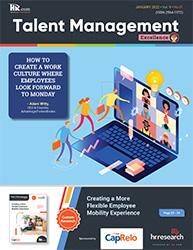
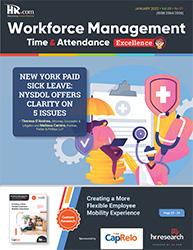




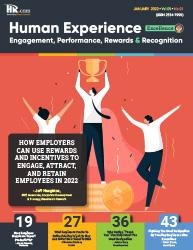



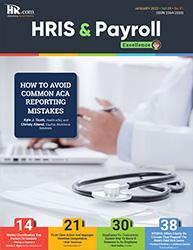

Like to submit an article? Use our online submission form or for more information go to www.hr.com/ExcellencePublications Publications 13 Targeted publications to reach your audience Informing, Educating, Enlightening and Assisting HR professionals in their personal and professional development, the Excellence series offers high-quality content through the publications!



































































 LEARN MORE
LEARN MORE












